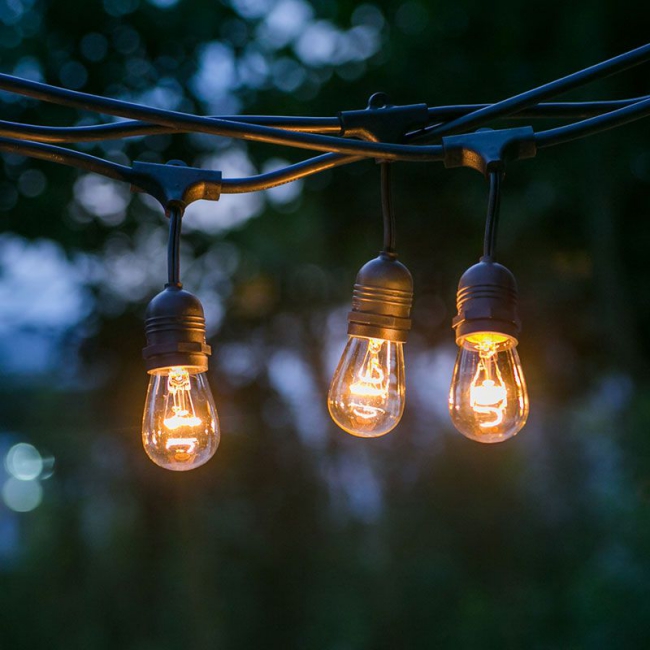Jul. 15, 2020
Whether you are setting up lights for the holiday or installing permanent garden string lights in the backyard, protecting your outdoor string lights should be your top priority. Our first part on protecting outdoor light strings focuses on ensuring that your lights are rated for outdoor use and how to keep the connection safe. Now garden string light suppliers will discuss how to prevent strings and circuits from being overloaded and protect wires from damage.
In order not to short-circuit your wires or blow up a circuit in your house, you need to stay below the maximum wattage or number of connections that the light string can handle. The maximum wattage is the total wattage that a single string can handle. When connecting multiple strings, the maximum operation is the total wattage that multiple strings can handle. Max's connection is the total number of light strings that can be safely connected together. When calculating the maximum operation from the lamp wattage, the best rule of thumb is to use no more than 80% of the possible wattage. If you need to reduce the wattage of courtyard lights and commercial spools, please use LED bulbs.
Excessive power consumption in the circuit can cause circuit breakers to trip, short circuits, and even cause electrical fires. Most homes have 15 or 20 amp circuits. The 15 amp circuit can handle no more than 1,800 watts, and the 20 amp circuit does not exceed 2,400 watts. As with the light string, you should try to keep it below 80% of these quantities. Before plugging in the electric light, first, check whether your outdoor socket is a shared circuit or has its own dedicated circuit. Try to spread the light string between the circuits to reduce the load.

Did you know that the extension cord will also be overloaded? All extension cords have the maximum rated current listed on the package. Exceeding this value will cause the power cord to overheat and may cause a fire. Divide the total wattage of the wire by 110 (ampere=watt/110) to find the amperage of your lamp. Once you have the amperage, you can determine the length and wire gauge required for the extension cord. Be sure to have a length of wire you need while avoiding too much. The farther the current goes along the power line, the greater the lost voltage. To eliminate the voltage drop in a longer power cord, choose a larger power cord. For example, a 100-foot 16-gauge 2-core wire (16/2 or 16 AWG/2) can handle 10 amps, while a larger 10-gauge 3-wire wire (10/3 or 10 AWG/3) of the same length can Handle 15 amps.
Avoid using staples or uninsulated metal hooks when you hang your lights. Staples can easily crush or puncture wires and damage the jacket. Metal hooks and clips that lack a protective coating (such as vinyl) will generate heat in hot climates, which may melt the jacket and expose the wires to the components. Eye screws, cup hooks, and other assorted hanging hooks with a protective coating are available. Plastic mounting clips can also be used to install outdoor waterproof string light.
Have you noticed any chewing marks on your outdoor light string? Squirrels in urban areas like to nibble their teeth. Damaged strings need to be replaced immediately to avoid short-circuiting the entire display. To prevent squirrels and other pests from biting on the rope, you need to stop them. Scare away pests with owl bait or use ready-made squirrel repellent.
Ensuring that outdoor light strings are properly stored can help you alleviate many problems when you use them later. To prevent entanglement and disconnection, wind up the outdoor light string before storing it. The storage box specially used for string lights has a plastic shape to wrap the lights. You can also make your own using cardboard, wrapping paper tube, or hanger. The cord reels can also be used for longer garden lights. When storing the garden light string, the bulb should be removed and stored separately to prevent damage.

Copyright © Zhongshan Guochong Lighting Co.,Ltd.All Rights Reserved | Sitemap | Powered by 